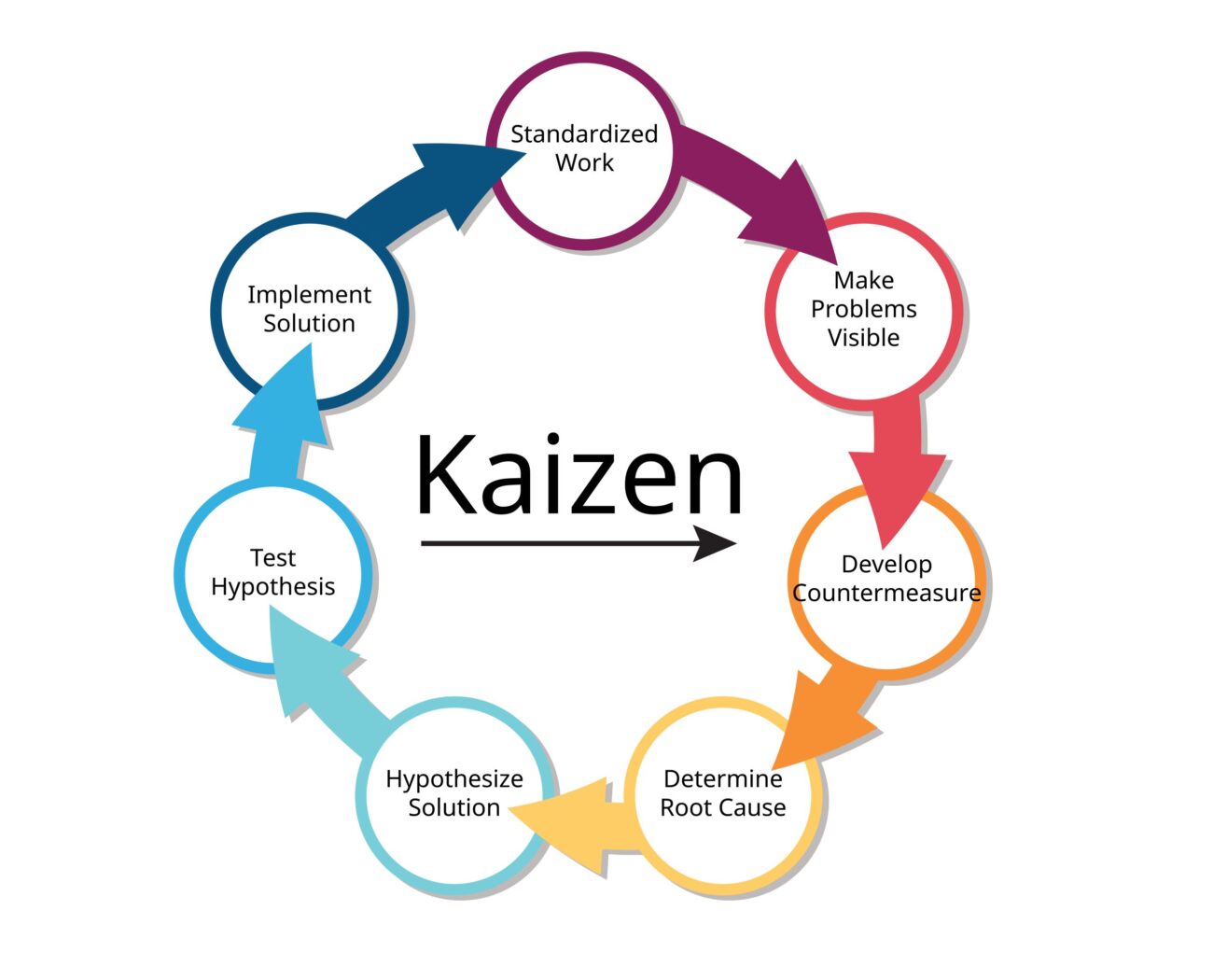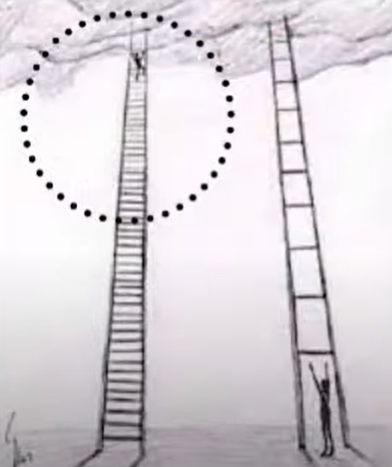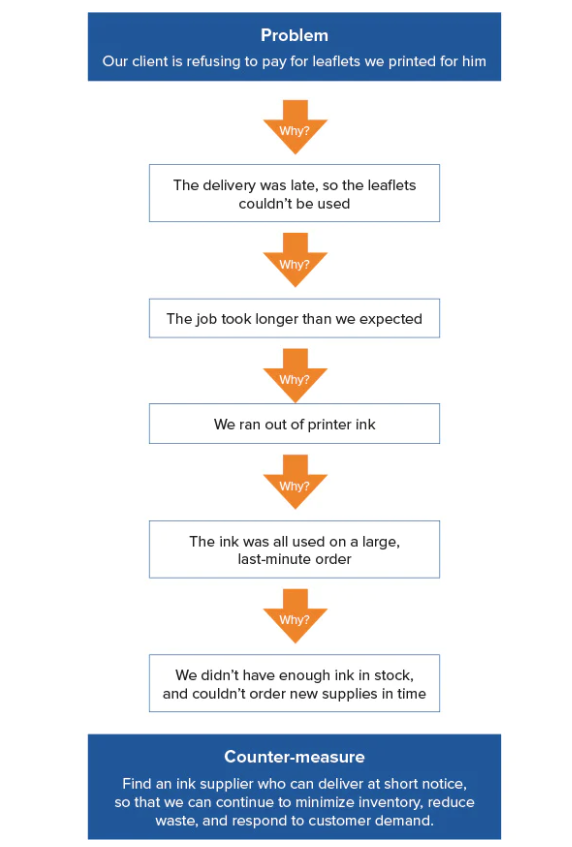
Last Updated on May 18, 2023 by Jacob
Intro
Our lives are constantly run by systems, routines and processes. Wherever there is such, there is a potential for Kaizen.
KaiZen originates from Japanese and consists of two words – Kai & Zen. Kai means change and Zen means better (or good). Kaizen means change for better or continuous improvement.
Kaizen was initially used only in business but can be applied to personal life, work life, social and family life.
The core of Kaizen is to continuously identify and implement small improvements. Kaizen goes well hand in hand with “Marginal gains theory” which says that improving by optimizing and improving processes and performance across a number of different areas will lead to more significant and substantial improvements overall.
Example on Marginal gains theory:


Kaizen is mainly concerned with working life and can be defined as a statistical process control to be used for improving the quality of every aspect in a business.
Kaizen or continuous improvement is both a set of process improvement tools and a philosophy that, to be successful, should be adopted in all parts of the organization.
Often it said that Kaizen has a dual nature. On the one side Kaizen as an action plan and on the other side Kaizen as a philosophy.
Kaizen as an action plan is all about taking advantage of the Kaizen toolbox and organizing events in all levels of the organization. Events are focused on methodically improving specific areas of the organization.
Kaizen as a philosophy that sees gradual improvement in productivity and methodical processes to improve all aspects of life.
Each and every employee no matter rank in the organizational hierarchy should be considered a contributor or facilitator of Kaizen.
Below picture illustrates well the philosophy of Kaizen. Break down any big task in multiple small tasks and big steps will be achieved.

History of Kaizen
Initially introduced during world war 2 when Toyota implemented a quality control circle in their production system. The concept gained popularity in Japan in the 1950’s and gradually developed over decades and officially gained recognition by the publication of the book “Kaizen” by Masaaki Imai. Masaaki Imai founded the international Kaizen institute in 1985, which helped introduce Kaizen concepts, Kaizen systems and Kaizen tools to organizations.
Over the years Toyota became so successful with their improvements, that Kaizen also sometimes at an industrial level are referred to as the “Toyota production system”.
Today Kaizen is recognized worldwide as one of the important pillars of an organization’s long term success. Organizations who introduce Kaizen observe that introducing continuous small continuous improvement efforts into a system brings more effective results than few major changes.
Aspects of Kaizen
Traditional Kaizen is focused on 5 concepts: Teamwork, personal discipline, improved morale, quality and suggestions for improvements.
Kaizen considers a huge number of small changes better than a few big changes at the same time.
- Considers ideas from any levels of the organization – especially those with hands on.
- Focuses on improving a current state to a predicted future state.
- Does not require any significant capital investments
- Encourages workers to take ownership of their own work.
Why Kaizen
Kaizen is an approach to create continuous improvement. While using kaizen all employees at all levels of the organization are responsible for identifying and suggesting improvements in the organization.
Kaizen is mainly focused on improving productivity and optimizing or eliminating non-value adding processes.
Kaizen when implemented throughout the organization becomes a part of the organizational culture. Kaizen becomes a common set of shared values, rituals and processes which overall increases a common sense of belonging and cohesion in the organization and directs how the employees behave in the company.
Kaizen reduces waste and thus makes the organization more successful.
Kaizen leads to more satisfied employees as a result of teams being more successful in their deliveries – thus leading to a higher sense of purpose and accomplishment. When employees are heard and start themself looking at processes, they begin to solve problems continuously or at least suggest improvements.
As employees see the benefits of Kaizen it tends to increase their commitment to work.
10 Kaizen principles for continuous improvement
Depending on your source you will find multiple variation on the 10 principles of Kaizen, but here are some of those I find most valuable.
- Improve everything continuously
- Abolish old and traditional concepts
- See waste and problems as opportunities
- If something is wrong correct it
- Empower everyone to take part in problem solving
- Be transparent – show your actions to other employees
- Take inputs from multiple professionals
- Use creativity to find low-cost small improvements
- Before making decision ask “why” 5 times to get to the root cause
- remember that improvement has no limits. Never stop trying to improve.
Examples of Kaizen Tools
The Deming cycle
Also known as the PDCA cycle. Plan, Do, Check, Act
- Plan – Establish a plan for
- Do – Executing on the plan
- Check – Assess the process and results for potential improvements
- Act – Implement those improvements you found in your process
The Deming cycle is a cyclical and iterative process which runs continuously. An alternative to the Deming cycle is the DMAIC cycle – “Define, measure, analyze, improve, control”.
Process mapping
A structured visualization to identify and outline individual inputs, steps & actors within a process. When doing process mapping it’s important to stick to a common set of standards. Use simple concise notations and task naming. When possible use swimlanes. Always use left to right or up to down order. Do never overcomplicate a process map.
Value Stream Mapping
A technique to optimize a process by taking the process map and displaying all critical steps and quantifying those in time and volume on each stage. Then making a plan for an optimized future state of a more efficient process.
Gemba Walk
Gemba in Japanese means “the actual place”. This is where the work takes place.
In software development it’s on the floor among the development teams. A Gemba walk bridges strategy & theory with practice by bringing leaders as close as possible to people who deliver the actual work.
Pareto Analysis
Pareto Analysis is a decision making technique to assess competing problems and compare the impact of fixing them. Pareto analysis is derived from the “Pareto Principle” – better known as the “80/20 Rule”.
The Pareto principle states that 80 percent of value comes from 20 percent of the work. Main benefits of Pareto Analysis is to help identify and prioritize problems and tasks. Improving productivity and thus profitability.
In short you perform a Pareto Analysis by identifying problems and grouping them on a chart with Cause and effect. The “root cause” of problems with the highest overall negative impact is then where you start improving your process.
5 Why’s technique
The 5 why method is maybe the simplest but most fascinating tool in the Kaizen toolbox. The 5 why method is supposed to identify the “root-cause”.
When dealing with a problem you get to the root cause by asking “Why?” 5 times. Then when the root cause becomes apparent you find a countermeasure or process improvement to fix the root cause problem.

